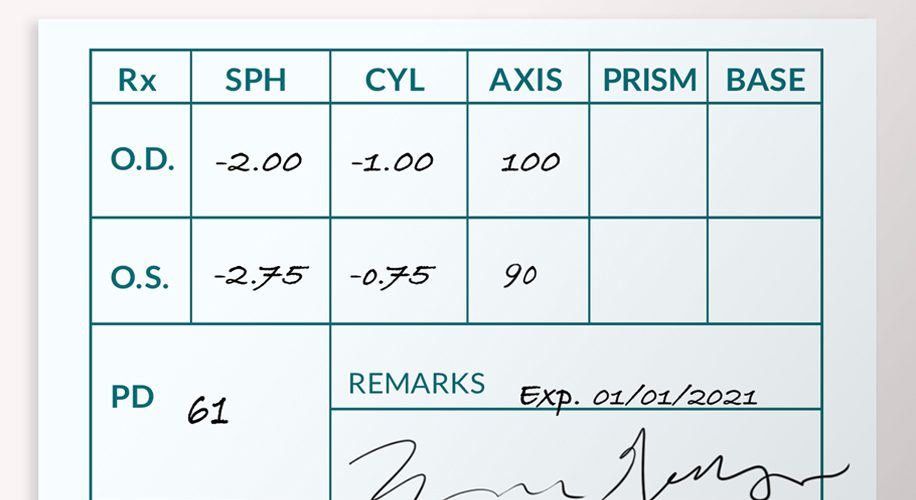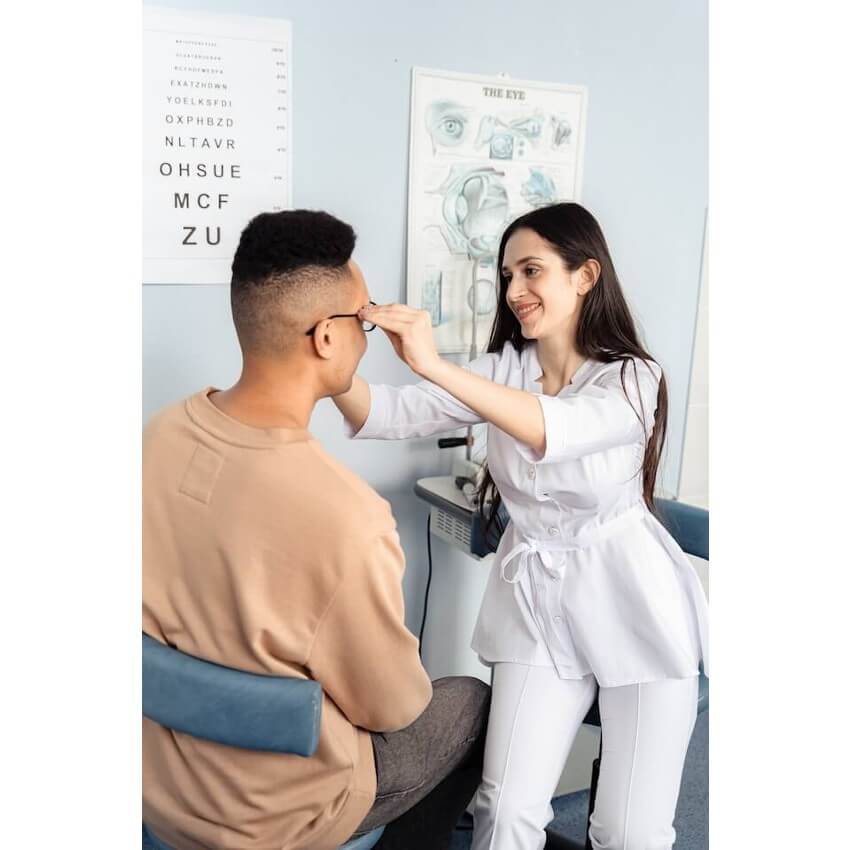Cracking the Code: Unraveling the Secrets of Your Eye Prescription
- BY Dr. Sophia Moh
- IN Eye Care
In the fascinating world of eye prescriptions, there are complex codes that optometrists use to determine our vision correction needs. Have you ever wondered what those numbers and abbreviations on your prescription mean? Let’s dive deep into the meaning behind these codes and demystify the secrets of your eye prescription.
Understanding Vision

Before we decode your eye prescription, let’s start by understanding how vision works. The eye is a remarkable organ that allows us to see the world around us. It functions by focusing light onto the retina, located at the back of the eye. The retina then converts this light into electrical signals that are sent to the brain, allowing us to perceive images.
There are common vision problems that can affect our ability to see clearly. Nearsightedness, also known as myopia, occurs when distant objects appear blurry, while close objects remain clear. On the other hand, farsightedness, or hyperopia, causes nearby objects to be blurry, while distant objects may still be clear. Astigmatism, another common vision problem, results in distorted or blurred vision at all distances.
Eye Exams and Prescription

Regular eye exams are essential for maintaining good eye health and detecting any potential vision problems. During an eye exam, an optometrist will perform various tests to assess your visual acuity and overall eye health.
When it comes to your eye prescription, it consists of several components that indicate the specific vision correction you need. The two main terms you’ll come across are “OD” and “OS,” which stand for “oculus dexter” (right eye) and “oculus sinister” (left eye), respectively. The three key values in your prescription are the sphere, cylinder, and axis. The sphere represents the lens power needed to correct nearsightedness (-) or farsightedness (+). The cylinder indicates the additional lens power required to correct astigmatism, and the axis indicates the orientation of the cylinder.
Decoding Your Eye Prescription

Now that we understand the basic components of an eye prescription, let’s decode it further. The sphere value, measured in diopters (D), indicates the degree of nearsightedness or farsightedness. A negative value indicates nearsightedness, while a positive value indicates farsightedness. The cylinder value, also measured in diopters, represents the amount of astigmatism present. Astigmatism occurs when the cornea or lens has an irregular shape, causing blurred or distorted vision. The axis tells us the orientation of the astigmatism, measured in degrees from 1 to 180. In addition to the sphere and cylinder, your eye prescription may also include values for ADD and prisms. ADDs are typically used for people with presbyopia, a condition that affects near vision as we age. Prisms, on the other hand, are used to correct eye alignment issues.
Choosing the Right Eyeglasses

When selecting frames for eyeglasses, it’s important to consider factors such as face shape, personal style, and comfort. The right frames will not only correct your vision but also complement your appearance. When shopping for glasses on Zenni, you can check the details of the frame to see if the frame is compatible with your glasses prescription.
There are several types of lenses available, including single vision, bifocal, and progressive lenses. Single vision lenses are used to correct either nearsightedness or farsightedness. Bifocal lenses have two distinct zones for near and distance vision, while progressive lenses provide a seamless transition between different distances. When browsing for glasses on Zenni, we recommend using the “prescription” filter to help you find the perfect frame for your prescription.
Related: Bifocals Vs. Progressives
Eye Prescription Myths and Misconceptions

There are several myths and misconceptions surrounding eye prescriptions and vision correction. One common myth is that eye exercises can improve vision. While eye exercises may help with certain conditions like eye strain, they cannot permanently correct vision problems such as nearsightedness or astigmatism. Another misconception is the idea of achieving “perfect vision.” While vision correction can greatly improve your visual acuity, it cannot guarantee perfect vision. Our eyes have limitations, and factors such as age, genetics, and eye diseases can affect our vision despite corrective measures. It’s also important to understand that corrective lenses do not cure vision problems; they simply provide a means to see more clearly. Regular eye exams and proper eye care are still vital in maintaining good eye health.
Embracing the nuances of your eyeglasses prescription can truly transform your online eyewear shopping experience. As you unravel the mysteries hidden within those intricate codes, you’ll uncover a deeper understanding of your unique vision needs, empowering you to select the perfect frame and lenses. And don’t forget, routine eye exams with your optometrist are key to maintaining your visual well-being. Here’s to unveiling the enchanting world of your eye prescription – happy shopping and healthier sight ahead!
About the Author: Dr. Sophia Moh, OD, ABOC
Dr. Sophia Moh, OD is an optometrist located in Bay Area, California. She completed her undergraduate studies at UC San Diego and earned her doctorate at UC Berkeley School of Optometry. She has experience in a variety of eye care settings including primary care optometry, general ophthalmology, community health clinic, and Veterans Affairs. Her mission is to help the world see better by developing high-quality, affordable eyewear for everyone. She is also a certified American Board Optician (ABO) and provides training and lectures on optical education topics.




